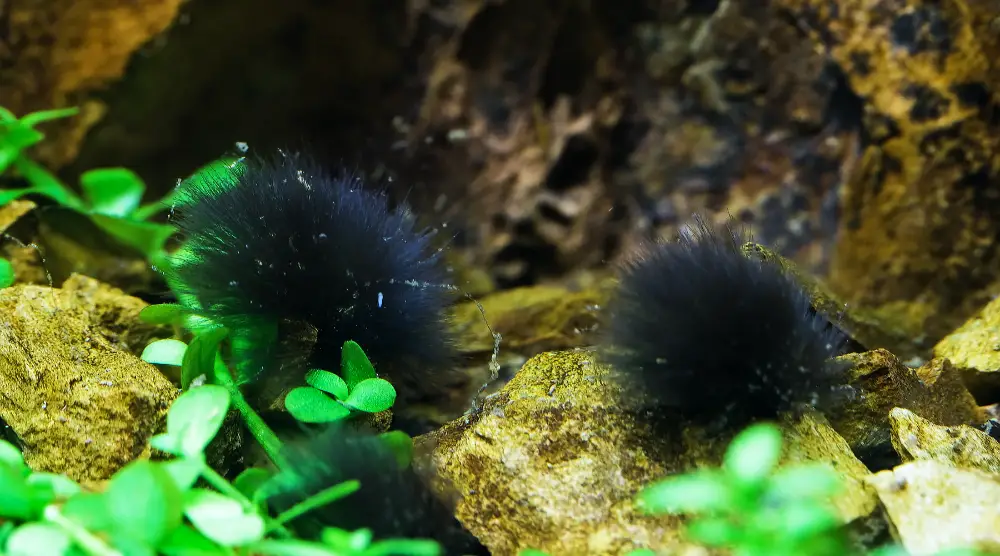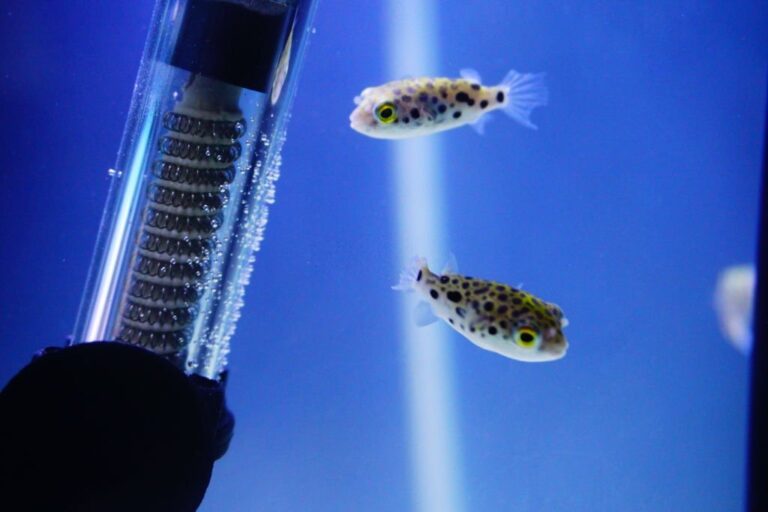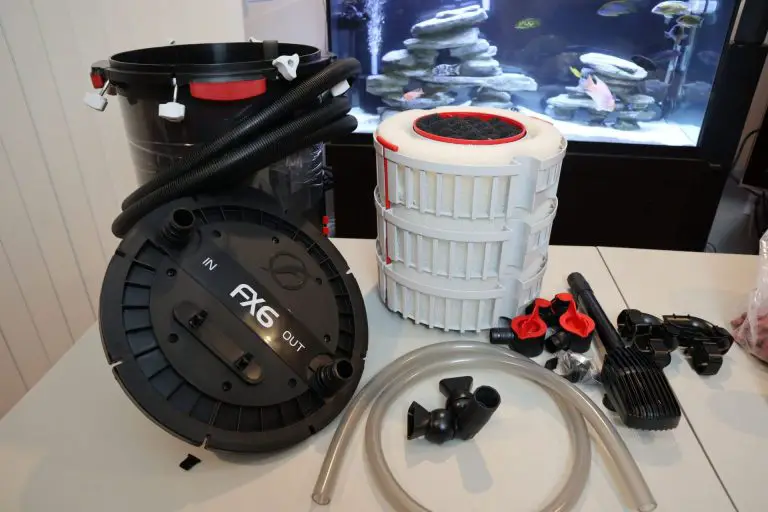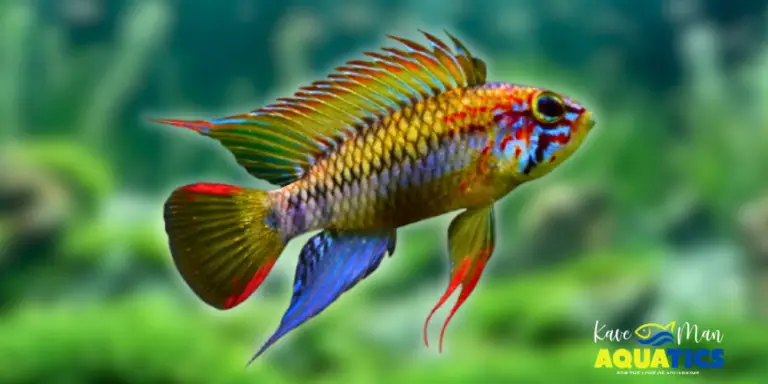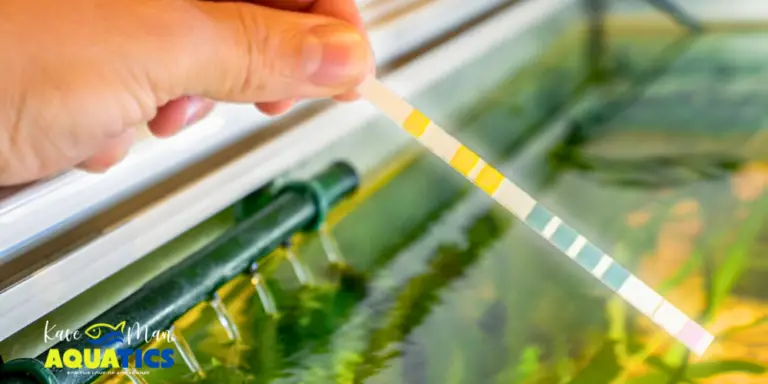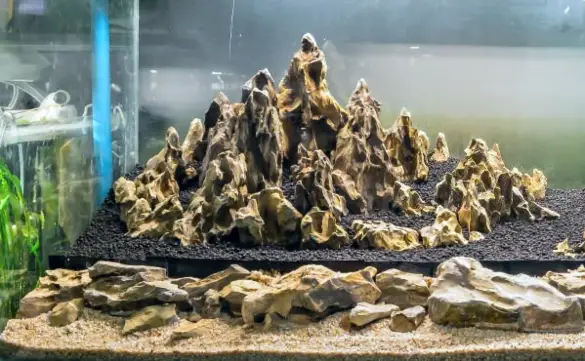Black Beard Algae — All You Need to Know
Black Beard algae — the invasive aquarium algae that every fish-keeping enthusiast should be familiar with. As a common troublemaker in aquariums, Black Beard algae (also known as BBA) is a pesky form of aquarium algae growth that can quickly take over if left unchecked.
In this article, we’ll delve into the ins and outs of this stubborn intruder, discussing its prevalence, the nuances of algae growth, and effective methods of algae control. By understanding the fundamentals of BBA, you’ll be equipped to maintain a thriving aquatic environment that’s free from the clutches of this unwelcome guest.
What Is Black Beard Algae?
Black Beard algae, scientifically known as Audouinella or Bryopsis, is a persistent type of aquarium algae that often plagues fishkeepers. This stubborn invader gets its name from its appearance — dark green or black tufts that bear a striking resemblance to a rugged beard or stubble. Unlike some other algae varieties, BBA doesn’t form slimy films — instead, it tends to grow in dense clusters, attaching itself to various surfaces within the aquarium.
These tufts can appear on a range of materials — from decorations and rocks to plant leaves and even the glass walls of the tank. Its growth isn’t limited to just one type of aquatic setup — both freshwater and marine aquariums can fall victim to this unwelcome guest. It’s not uncommon to find BBA thriving in areas with lower water flow and lower light conditions, making it a persistent nuisance for aquarists striving to maintain pristine aquatic environments.
Understanding the appearance and preferences of BBA is crucial for effective algae control. By identifying its unique characteristics and favored locations, you can implement targeted strategies to prevent and manage its growth, ensuring a healthier and more visually appealing aquarium for both aquatic life and enthusiasts alike.
Black Beard Algae vs. Similar Algae Types
Two often-confused culprits are hair algae and brush algae. While they share some similarities with Black Beard algae, each possesses distinct characteristics that set them apart:
- Black Beard algae: BBA presents itself in dark green or black tufts, resembling a rugged beard. It commonly attaches to surfaces in dense clusters, creating a visually prominent appearance. Unlike other algae, Black Beard algae tend to be coarser to the touch, with individual strands feeling slightly stiff.
- Hair algae: In contrast, hair algae boasts long, filamentous strands that flow with the water’s current, giving it its name. It can be green, black, or even red, and its appearance is often softer and more delicate than that of BBA.
- Brush algae: Brush algae forms dense patches with short, stiff filaments that look like tiny brushes or toothbrush bristles. It can range in color from green to red or even black, and its texture is notably coarse.
To accurately identify these algae types, pay attention to their appearance, texture, and growth patterns. Armed with this knowledge, you can take targeted measures to combat the specific algae you’re dealing with, ensuring a healthier and more vibrant aquatic ecosystem. Remember, knowing your enemy is the first step toward effective algae control.
Causes of Black Beard Algae
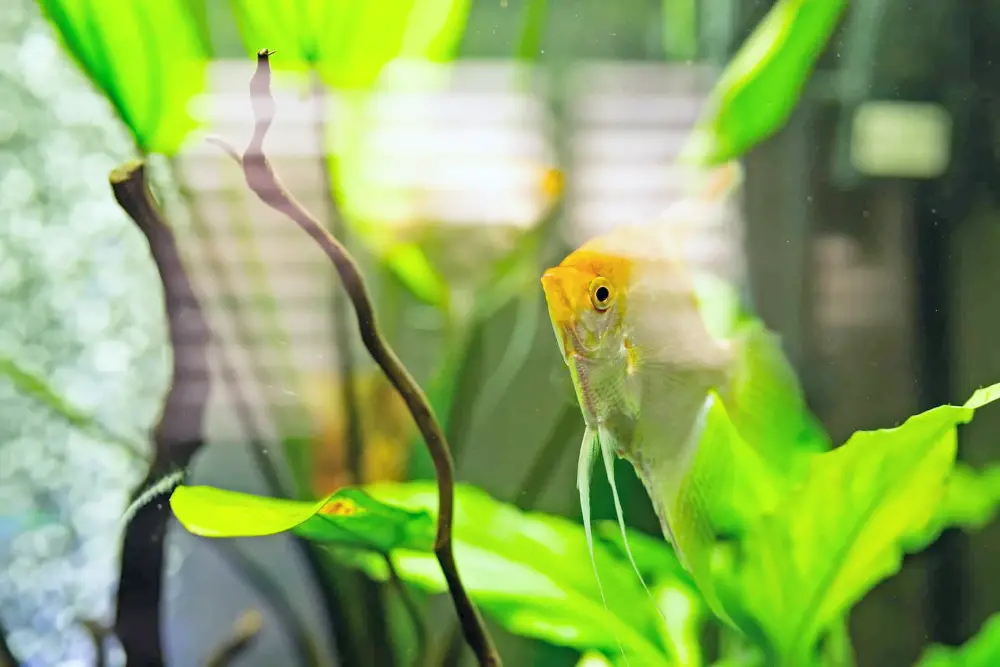
Understanding the triggers behind Black Beard algae growth is essential for effectively tackling this persistent issue in your aquarium. Several factors contribute to its development, making it crucial to address them to prevent its takeover:
- Excess nutrients: BBA often thrive in environments with elevated levels of nitrate and phosphate. These nutrients are byproducts of fish waste and decaying organic matter — contributing to the nitrogen cycle. Maintaining proper water parameters through regular water changes and efficient filtration can help keep nutrient levels in check.
- Inconsistent CO2 levels: Fluctuating carbon dioxide (CO2) levels can create an ideal breeding ground for BBA. When CO2 levels are inconsistent, aquatic plants struggle to thrive — giving algae a competitive advantage. Ensuring a stable CO2 supply can help maintain a healthy balance and discourage algae growth.
- Low flow areas: BBA prefer areas with low water flow, as these spots accumulate excess nutrients and provide a stable surface for algae to anchor. Increasing water circulation — through wave makers, for example — in your aquarium can help dislodge algae spores and hinder their establishment.
- Lighting: Adequate lighting is essential for healthy plant growth, but excessive or inconsistent lighting can contribute to BBA infestations. Algae, including BBA, can thrive in high light conditions, especially if CO2 and nutrient levels aren’t properly balanced.
Recognizing these triggers and their effects can guide you in creating an environment less favorable to Black Beard algae. By striking the right balance between nutrient levels, CO2 supplementation, water flow, and lighting, you can proactively prevent the growth of this persistent aquarium algae, ensuring a thriving aquatic ecosystem.
Potential Consequences of a Black Beard Algae Infestation
A Black Beard algae infestation isn’t just an eyesore — it can have significant repercussions for your aquarium’s overall health and beauty. Here are some reasons why tackling this algae is of utmost importance:
- Aesthetic impact: BBA’s dark tufts can quickly cover various surfaces, turning your once-pristine aquarium into a less-than-appealing spectacle. Glass walls, decorations, and even aquatic plants can become shrouded, diminishing your aquascaping’s visual appeal you’ve worked hard to create.
- Plant health: Aquatic plants play a crucial role in maintaining a balanced ecosystem. However, BBA’s rapid growth can overshadow these plants, depriving them of essential light. As it attaches to leaves and stems, it competes for nutrients, leaving plants weakened and struggling to thrive.
- Nutrient competition: Just like any other form of algae, BBA consumes nutrients that your aquatic plants require. This can result in an imbalance, causing plants to suffer while the algae flourishes. Ultimately, an unchecked infestation can lead to a less harmonious and less sustainable aquarium environment.
Through proactive maintenance, proper water parameters, and diligent care, you can ensure that your aquarium remains a vibrant and captivating oasis for both aquatic life and observers alike.
Prevention Strategies
Preventing the onset of Black Beard algae is far easier than battling a full-blown infestation. By implementing a few key strategies, you can create an environment that’s less welcoming to this persistent algae:
- Balanced nutrient levels: Regular water changes are a simple yet effective way to keep nitrate and phosphate levels in check. By removing excess nutrients, you create an environment that’s less conducive to BBA growth. Additionally, feeding your fish in moderation can help prevent nutrient spikes.
- Proper CO2 management: If you have a planted aquarium, maintaining stable CO2 levels is crucial. Adequate CO2 supplementation ensures healthy plant growth, which can help deter algae from taking over. Invest in a quality CO2 system and monitor levels to avoid fluctuations.
- Lighting optimization: Adjusting your aquarium’s lighting parameters can make a significant difference in preventing algae growth. Aim for a lighting duration and intensity that matches the needs of your aquatic plants. Avoid excessive lighting, as it can promote algae proliferation.
- Mindful stocking and feeding: Overstocking your aquarium can lead to increased waste production and nutrient accumulation. Similarly, overfeeding can contribute to nutrient imbalances. By being mindful of overstocking and overfeeding, you can keep a well-balanced population and feeding regimen — reducing the risk of fueling algae growth.
By incorporating these prevention strategies into your fish-keeping routine, you’ll create an environment that’s less inviting to Black Beard algae. Taking proactive steps to maintain a balanced ecosystem will not only ensure the well-being of your aquatic inhabitants but also keep your aquarium visually appealing and algae-free.
Removal and Management
Dealing with Black Beard algae requires a multi-pronged approach to effectively control its growth and maintain a flourishing aquarium. Here are some strategies for removal and management:
- Manual removal: A toothbrush or tweezers can be your allies in combating BBA. Gently scrubbing affected areas or carefully plucking the tufts can physically remove the algae from surfaces. Be patient and persistent, as manual removal may need to be repeated over time.
- Algae-eating organisms: Introducing natural predators can be an effective biological solution. Amano shrimp and Siamese algae eaters are known to consume BBA. These helpful critters can make a noticeable dent in the algae population, especially in smaller infestations.
- Adjusting water parameters: BBA thrive in specific conditions, so altering those conditions can hinder its growth. Ensuring stable CO2 levels, optimizing lighting, and maintaining balanced nutrient levels will create an environment that’s less favorable for its survival.
- Consistent maintenance: Regularly maintaining your aquarium by performing water changes, cleaning filters, and pruning plants can help prevent the resurgence of BBA. A well-maintained tank is less likely to provide the conditions it needs to thrive.
Want to dive into the specifics of how to remove Black Beard algae from your tank? Here are five effective methods to remove BBA — with their step-by-step guides.
Black Beard Algae FAQs
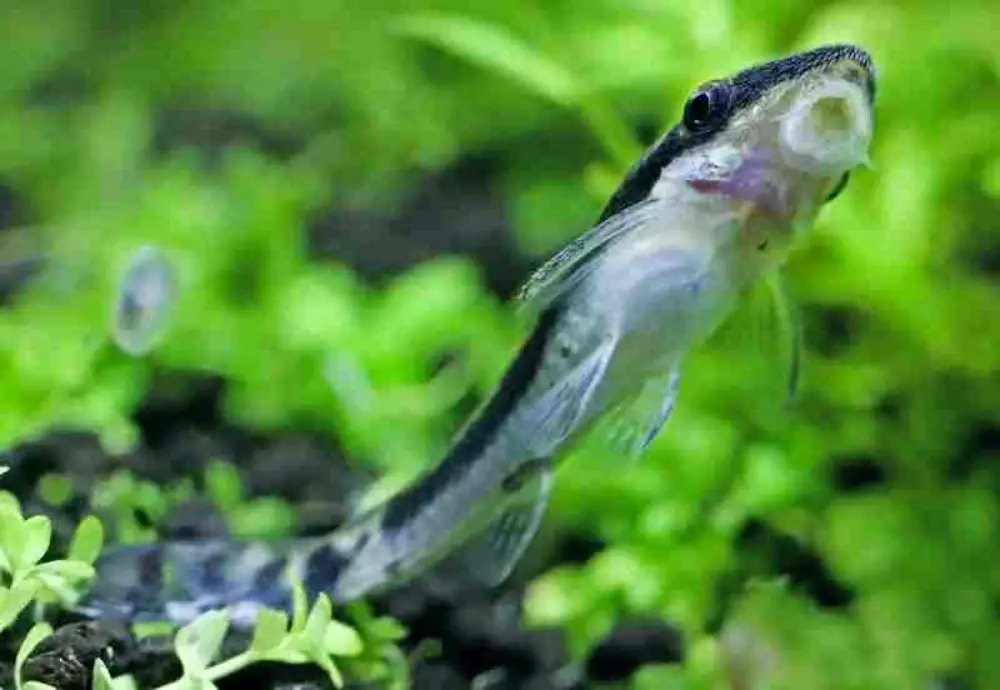
By understanding these frequently asked questions about Black Beard algae, you’ll be better equipped to address and manage its presence in your aquarium.
Is Black Beard Algae Harmful?
While Black Beard algae isn’t directly harmful to fish, it can negatively impact your aquarium’s ecosystem by competing with aquatic plants for nutrients and shading them. This can weaken the plants and disrupt the overall balance of the tank.
Do Fish Eat Black Beard Algae?
Most fish species don’t consider Black Beard algae a preferred meal. However, some algae-eating species like Amano shrimp, Siamese algae eaters, and certain snails might help keep its growth in check.
Do Water Changes Help with Black Beard Algae?
Yes, regular water changes can help reduce excess nutrients that fuel Black Beard algae growth. By maintaining proper water parameters, you create a less favorable environment for its proliferation.
How Fast Does Black Beard Algae Grow?
Black Beard algae growth rate can vary based on factors like lighting, nutrient levels, and CO2 availability. In some cases, it can be established within a matter of weeks if conditions are suitable.
How Does Black Beard Algae Spread?
Black Beard algae reproduce through spores that can easily spread in the water. These spores can be introduced to the tank through new plants, decorations, or even fish and equipment.
Does Too Much Light Cause Black Beard Algae?
Excessive or inconsistent lighting, especially in the presence of high nutrient levels, can contribute to Black Beard algae growth. Ensuring proper lighting duration and intensity while maintaining balanced conditions is crucial.
Why Do I Keep Getting Black Beard Algae?
Black Beard algae can persist if aquarium conditions favor its growth. Factors like imbalanced nutrients, fluctuating CO2 levels, and inadequate water flow could be contributing to its recurrence.
KaveMan Aquatics’ 1-on-1 Coaching — Your Key to Algae-Free Aquarium Bliss
We’ve explored the ins and outs of this persistent aquarium algae, from its appearance to prevention and removal strategies. Remember, proactive maintenance is the key. By balancing nutrient levels, fine-tuning CO2, and optimizing lighting, you create an environment where Black Beard algae struggle to take hold.
For personalized guidance, remember to explore KaveMan Aquatics’ 1-on-1 coaching services. Together, we’ll master the art of aquarium maintenance and enjoy the beauty of vibrant, thriving underwater worlds.
-
Black Beard Algae — All You Need to Know
Discover the ins and outs of Black Beard algae in our comprehensive guide. Learn prevention, removal, and more to keep your aquarium thriving!

